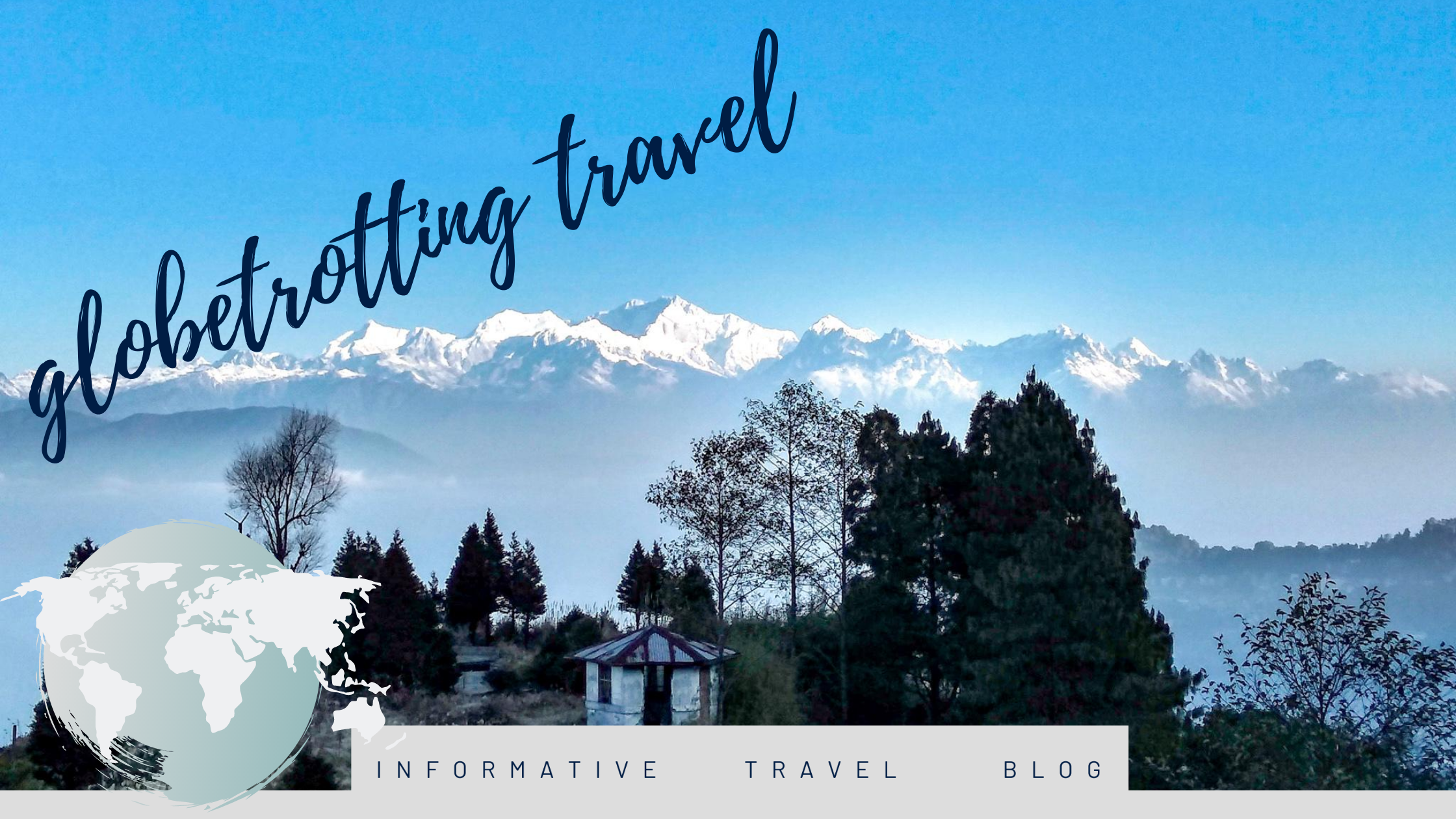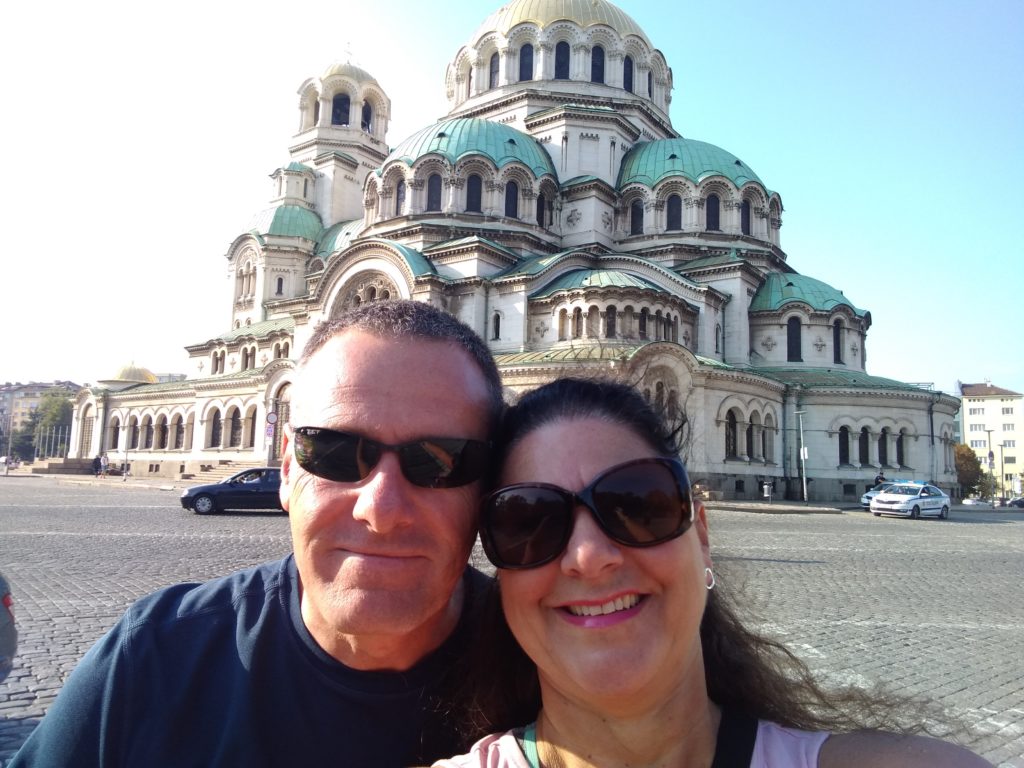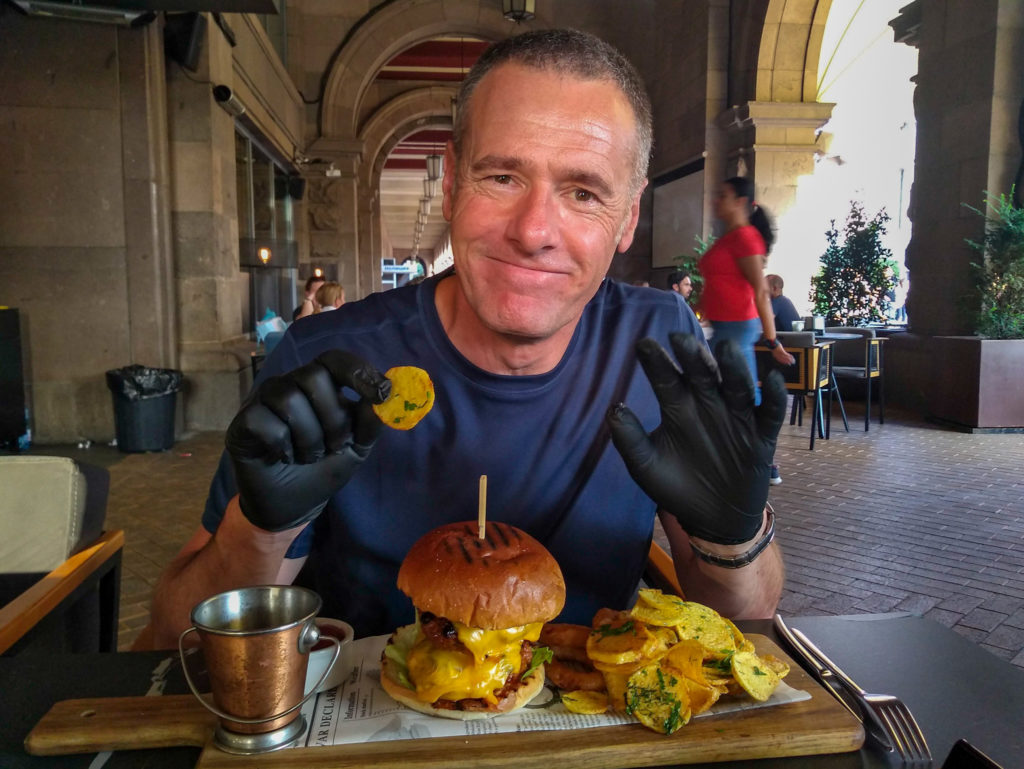”City with the triangle of Religious tolerance”.
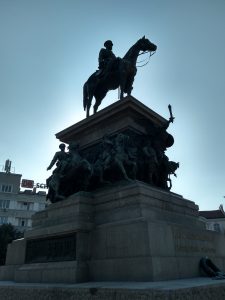
Where is Sofia?
The city of Sofia is at the foot of Vitosha Mountain in the western part of Bulgaria. It occupies a central position in the Balkans, being midway between the Black Sea and the Adriatic Sea.
Getting there
Our journey from Veliko Tarnovo to Sofia was by local bus.
Our accommodation
We chose to stay at the Airbnb Superb quiet studio accommodation. A small self-contained apartment near the centre of Sofia, within walking distance of the main sites in the city. This accommodation is on the 5th floor and there is no lift. Advisable to wear sensible flat shoes while walking the streets of Sofia, as the pavement can be in a very bad state of repair and there are also a lot of cobblestone streets.
Places of interest
Sofia Synagogue
One of the main alluring architectural wonders of Sofia. The synagogue is located in the vicinity of the Central Market Hall in the city centre. It has the capacity to accommodate 1,300 worshippers. Because of the migration of most of Bulgaria’s Jewish community to Israel, only around 50 worshippers attend services.
Constructed in a Moorish style. Lavishly adorned, internally, with columns of Carrara marble and multicoloured Venetian mosaics, as well as decorative wood carvings. The synagogue’s main chandelier is the largest in the Balkans, weighing in at a colossal 1.7 tons. Rumours suggest that it is made of gold from Ancient Palestine.
Banya Bashi
A 3 minute walk from the synagogue is Banya Bashi Mosque. The preeminent aspect of this mosque is that it is built on top of a natural thermal spring. There are vents located in the ground near the mosque walls that steam emanates from, a truly remarkable sight. The mosque most probably derives its name, Banya Bashi, which means many baths, from its location above the thermal spring.
Currently, the only functioning mosque in Sofia. A remnant of the Ottoman rule of Bulgaria that lasted nearly five centuries. Used by the city’s Muslim community.
The statue of Saint Sophia
A further 3 minute walk down Bulevard Knyaginya Maria Luiza is the statue of Saint Sophia.
The statue erected in 2000 occupies the former statue of Lenin site. Adorned with the symbols of power, fame, and wisdom (crown, wreath, and owl). The crown also being a reference to the Goddess of Fate, Tyche, inspired by the old emblem of Sofia dating back to the 1900s.
St. Kyriaki Cathedral Church
Carrying on walking down Bulevard Knyaginya Maria Luiza for another 3 minutes, brings you to St. Kyriaki Cathedral Church. An Ornate, domed Orthodox church featuring an elaborate interior covered with murals.
Ministry of Defence
Behind St. Kyriaki Cathedral Church is ul. Saborna. An 8 minute walk down which will take you past the Bulgarian Archaeological Museum and the Bulgarian National Bank, on the route to the City Garden Park, which sits right in front of the Ministry of Defence building. A fine example of Bulgarian modern architecture from the middle of the 20th century.
Ivan Vazov National Theatre
To the right, immediately adjacent to the Ministry of Defence building is the Ivan Vazov National Theatre. An imposing neoclassical theatre, opened in 1907, which is home to a diverse program of stage productions.
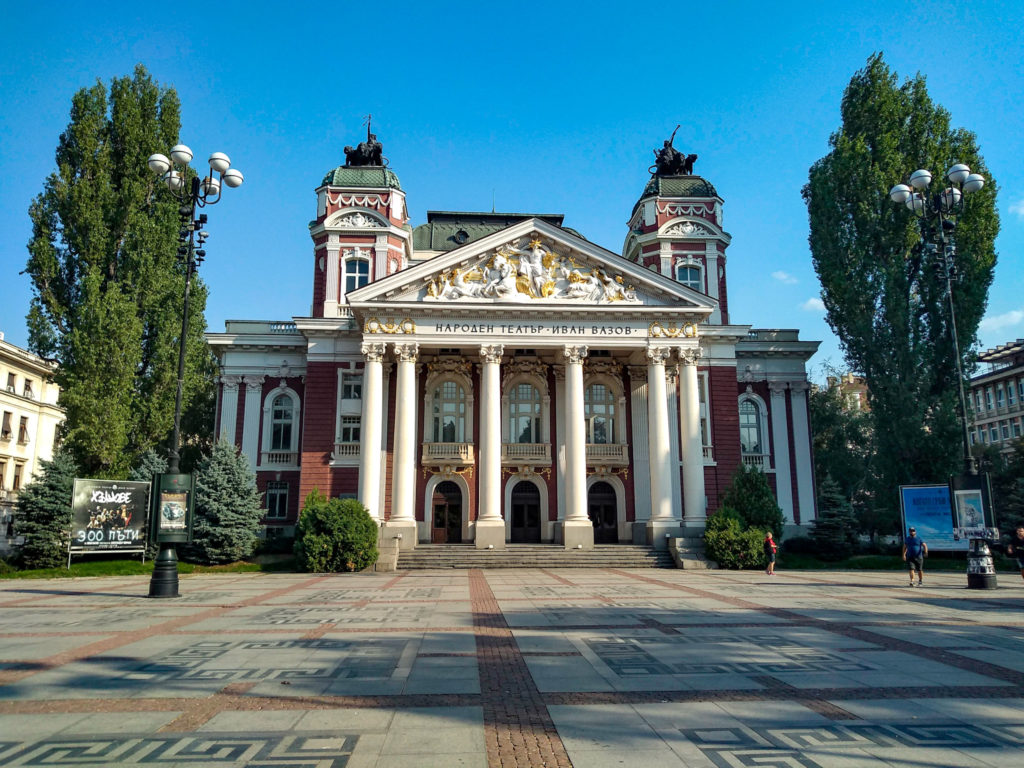
The National Art Gallery
Walking back along the front of the Ministry of Defence building, along ul. Dyakon Ignatiy takes you to the Ploshtad Knyaz Aleksandar I street. More multiple architectural wonders can be seen. The first of which is over to the left-hand side. The National Art Gallery, the National museum for Bulgarian artworks from the Middle Ages to the present, all housed in a former royal palace.
Trabant Monument
Located behind The National Art Gallery in the Royal Gardens is the Trabant Monument. As the title says, it is a monument to the infamous East German car. The Trabant was the most common car in East Germany. Symbolizing the country during the fall of the Berlin Wall in 1989. Images of East Germans crossing the border into West Germany were broadcast around the globe.
Sveti Nikolay Mirlikiiski Church
Returning to ploshtad Knyaz Aleksandar I from the Royal Garden. Turn left and follow the road for 170m, about a 2 minute walk. This will bring you to the Russian Church Sveti Nikolay Mirlikiiski. A 1914 Russian Orthodox church featuring a colorful tiled exterior & gilded onion domes.
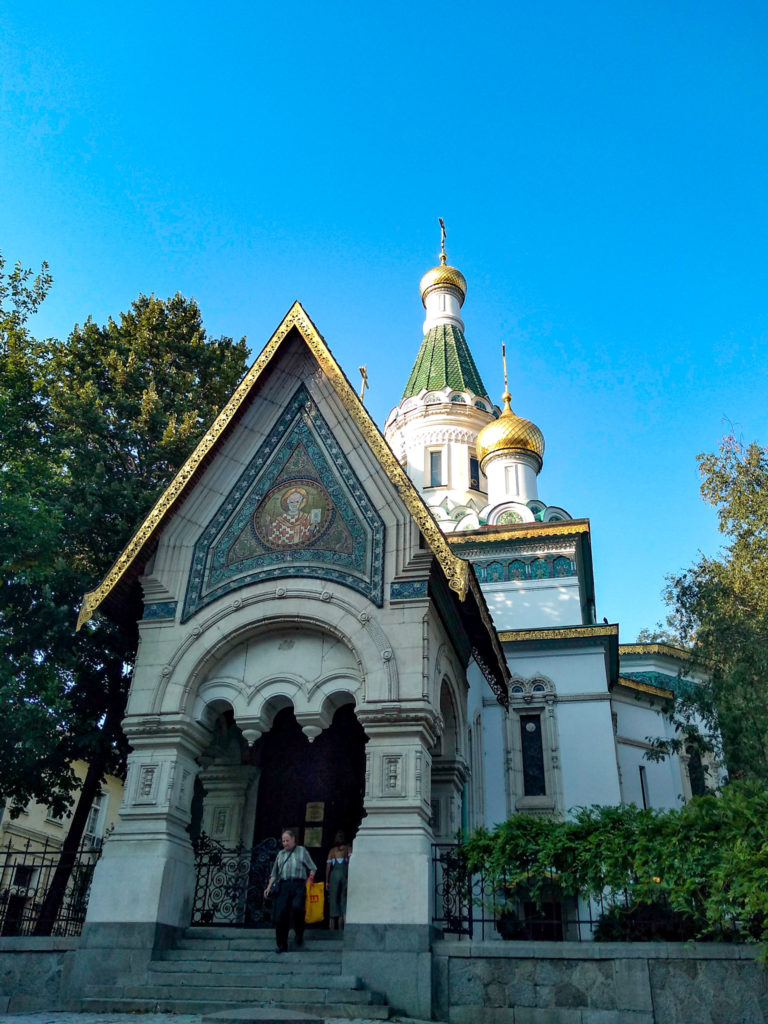
The Central Military Club
Continuing on down ploshtad Knyaz Aleksandar I another 100m brings you to the Central Military Club on the left-hand side. 1907, neo-Renaissance historic building, with an art gallery & event halls.
The Crystal Garden
On the opposite side of the road to the Central Military Club is the Crystal Garden. The Crystal cafe-bar, after which the garden is named, no longer exists. The spirit of its dissident writer, poet, and artist clientele still lives on. The garden, overseen by a monument of notorious politician Stefan Stambolov, has in recent times, established itself as the favourite place for the free-minded youths of the city.
Tsar Osvoboditel
A further 300m down the road on the same side as the Crystal Garden is the Tsar Osvoboditel. This Monument is an equestrian monument. Erected in honour of Russian Emperor Alexander II who liberated Bulgaria from Ottoman rule during the Russian-Turkish War of 1877-78
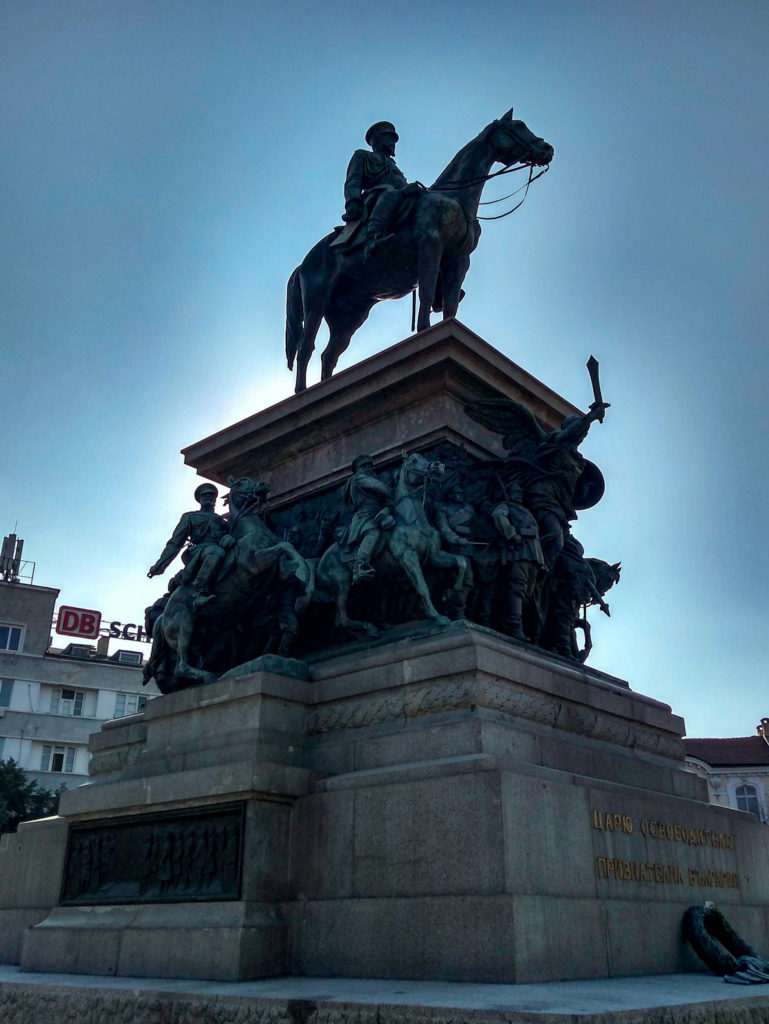
Aleksandar Nevski Cathedral
Crossing over ploshtad Knyaz Aleksandar I and heading up ul. 15-ti noemvri for a further 200m will take you to the jewel in Sofia’s crown, Aleksandar Nevski Cathedral. In the Neo-Byzantine style, this impressive cathedral has the capacity for a congregation of 5,000, making it one of the largest Eastern Orthodox cathedrals in the world.
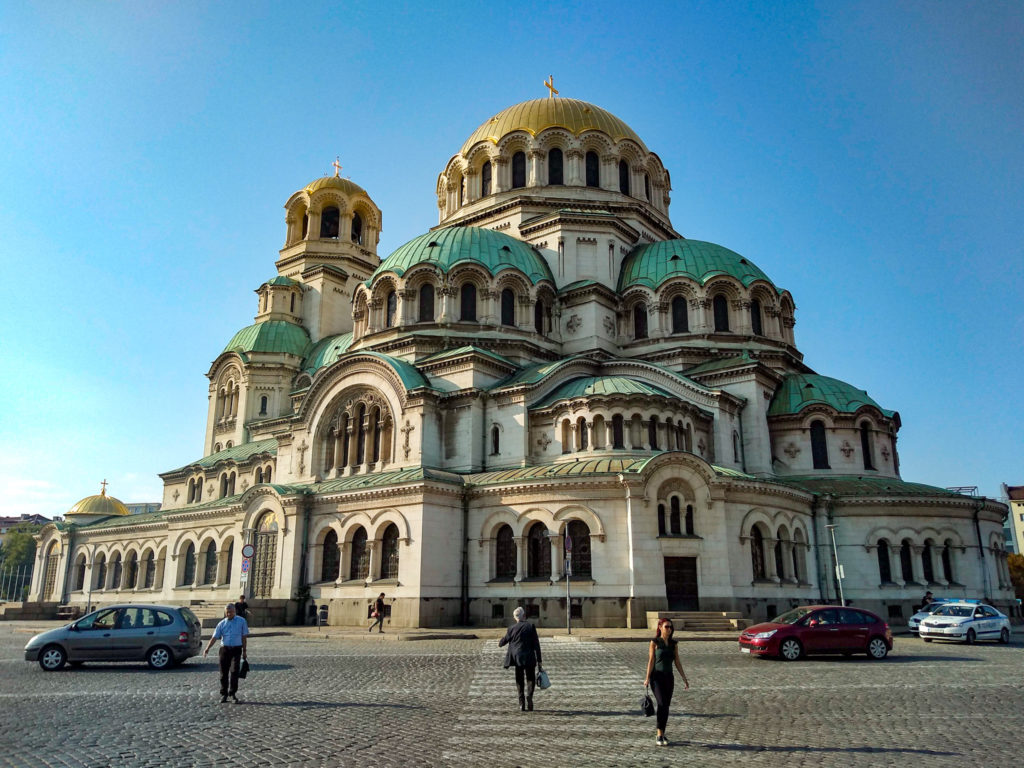
The magnificent building dominates Aleksandar Nevski Square. With its monumental gold-plated central dome, an impressive 148 feet above ground level it has the Lord’s Prayer inscribed around it in thin gold letters. Twelve bells have a combined weight of approximately 25 tons. The largest bell weighing an impressive 12 tons.
Housed in the Cathedral’s bell tower. The scent of burning incense fills the immense interior. Murals cover the walls. Huge chandeliers suspended from the ceilings and the whole building has a majestic, awe inspiring feel about it.
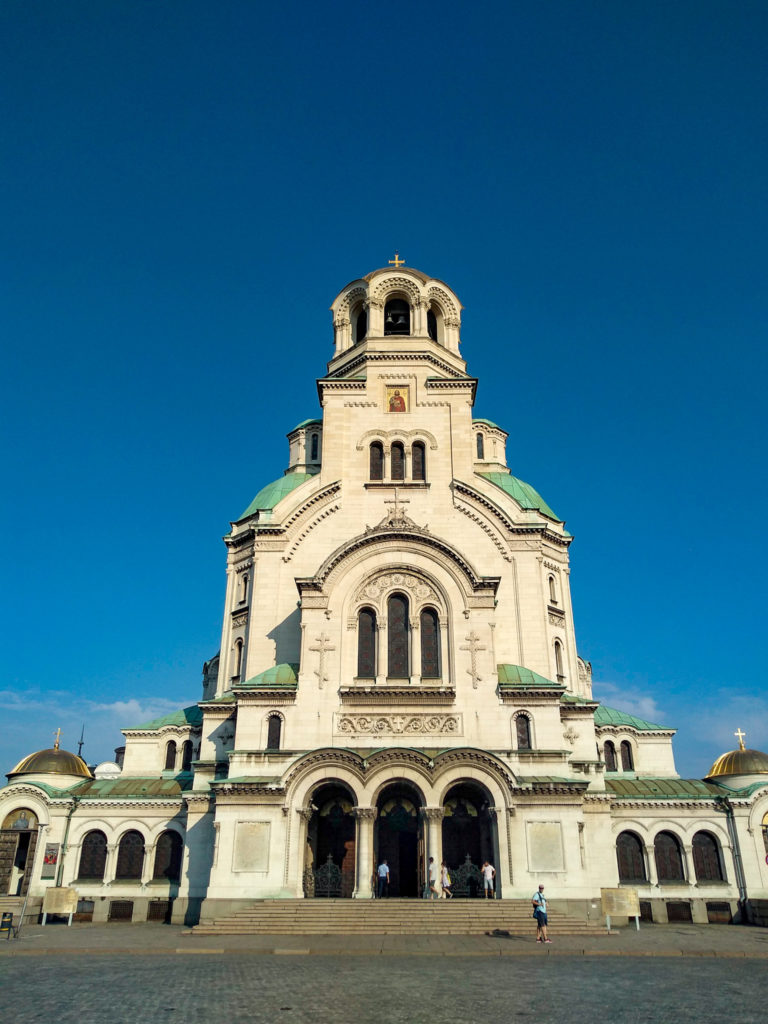
Getting around
Public transportation in Sofia consists of buses, trolleybuses, trams, and the metro. These start to operate every day at 0500 hrs, finishing at 2400 hrs. Having said that, a night bus service commenced in April 2018, running 4 bus routes across the city. The Urban Mobility Centre website provides full information on all transport schedules and maps.
Tickets
Whichever mode of transportation you use, the price of a ticket is the same. However, the metro has a different type of ticket to the rest of the system. A ticket purchased on the metro cannot be used on a tram, bus or trolleybus, and vice versa.
Bus, Tram and Trolleybus
Tickets for the bus, tram, and trolleybus can be purchased directly from the driver. Exact fare is required in cash. Tickets can also be purchased from onboard ticket machines, or from ticket kiosks at stops. When the purchase is complete, validate the ticket at one of the validating machines by feeding the ticket into the slot, where it will be stamped.
A single ticket costs 1.60 Lev, being valid for one journey on the same vehicle. For 12 Lev a set of ten tickets can be purchased. These are numbered and only valid for one person to use. The first ticket should be retained until the entire book has been used. An alternative option is to purchase a day pass for 4 Lev that is valid for unlimited travel on the buses, trams, and trolleybuses.
Metro
Tickets for the metro are different to those for the bus, tram and trolleybus. Purchased at all stations, either from the ticket office, or the ticket machines. Most ticket machines still only accept cash in the form of coins. Some newer machines do accept credit/debit cards.
As on the bus, tram, and trolleybus, a single ticket can be purchased for 1.60 Lev. Once validated the ticket can be used for 30 minutes. Also available for travelling on the metro is the electronic card. Purchased for 12 Lev, plus a 4 Lev fee.
Loaded with 10 tickets it allows multiple passengers to share the same card to enter the metro. When used in this way, one person scans all the passengers through the turnstile, before then scanning themselves through.
To Validated a metro ticket insert it into the slot on the turnstile. If the ticket is valid, the turnstile will open, allowing access to the train platforms. Invalidated tickets on all modes of transport will result in an immediate on the spot fine.
Tip
If using public transportation in Sofia. It is advisable to carry a pocket full of change to allow for the purchase of tickets.
